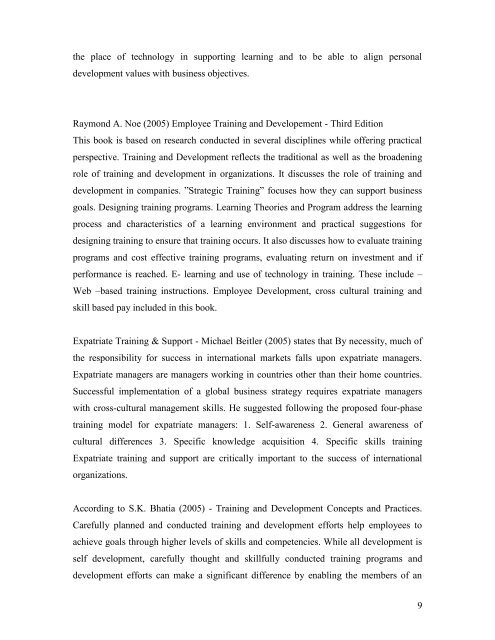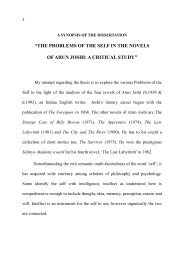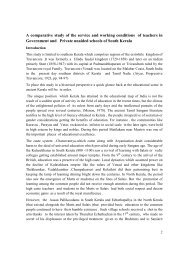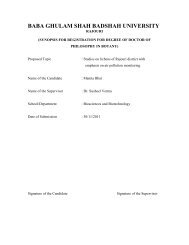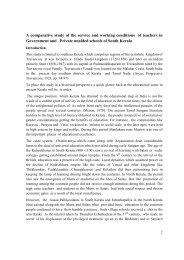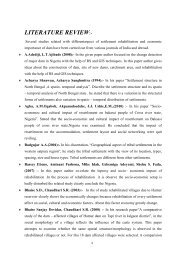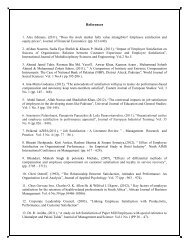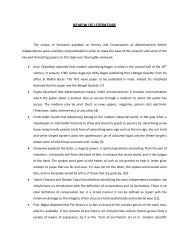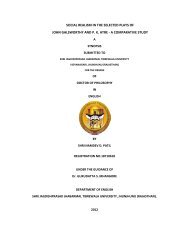1 Literature Review: In the present age of cut-throat competition, it ...
1 Literature Review: In the present age of cut-throat competition, it ...
1 Literature Review: In the present age of cut-throat competition, it ...
You also want an ePaper? Increase the reach of your titles
YUMPU automatically turns print PDFs into web optimized ePapers that Google loves.
<strong>the</strong> place <strong>of</strong> technology in supporting learning and to be able to align personal<br />
development values w<strong>it</strong>h business objectives.<br />
Raymond A. Noe (2005) Employee Training and Developement - Third Ed<strong>it</strong>ion<br />
This book is based on research conducted in several disciplines while <strong>of</strong>fering practical<br />
perspective. Training and Development reflects <strong>the</strong> trad<strong>it</strong>ional as well as <strong>the</strong> broadening<br />
role <strong>of</strong> training and development in organizations. It discusses <strong>the</strong> role <strong>of</strong> training and<br />
development in companies. ”Strategic Training” focuses how <strong>the</strong>y can support business<br />
goals. Designing training programs. Learning Theories and Program address <strong>the</strong> learning<br />
process and characteristics <strong>of</strong> a learning environment and practical suggestions for<br />
designing training to ensure that training occurs. It also discusses how to evaluate training<br />
programs and cost effective training programs, evaluating return on investment and if<br />
performance is reached. E- learning and use <strong>of</strong> technology in training. These include –<br />
Web –based training instructions. Employee Development, cross cultural training and<br />
skill based pay included in this book.<br />
Expatriate Training & Support - Michael Be<strong>it</strong>ler (2005) states that By necess<strong>it</strong>y, much <strong>of</strong><br />
<strong>the</strong> responsibil<strong>it</strong>y for success in international markets falls upon expatriate man<strong>age</strong>rs.<br />
Expatriate man<strong>age</strong>rs are man<strong>age</strong>rs working in countries o<strong>the</strong>r than <strong>the</strong>ir home countries.<br />
Successful implementation <strong>of</strong> a global business strategy requires expatriate man<strong>age</strong>rs<br />
w<strong>it</strong>h cross-cultural man<strong>age</strong>ment skills. He suggested following <strong>the</strong> proposed four-phase<br />
training model for expatriate man<strong>age</strong>rs: 1. Self-awareness 2. General awareness <strong>of</strong><br />
cultural differences 3. Specific knowledge acquis<strong>it</strong>ion 4. Specific skills training<br />
Expatriate training and support are cr<strong>it</strong>ically important to <strong>the</strong> success <strong>of</strong> international<br />
organizations.<br />
According to S.K. Bhatia (2005) - Training and Development Concepts and Practices.<br />
Carefully planned and conducted training and development efforts help employees to<br />
achieve goals through higher levels <strong>of</strong> skills and competencies. While all development is<br />
self development, carefully thought and skillfully conducted training programs and<br />
development efforts can make a significant difference by enabling <strong>the</strong> members <strong>of</strong> an<br />
9


